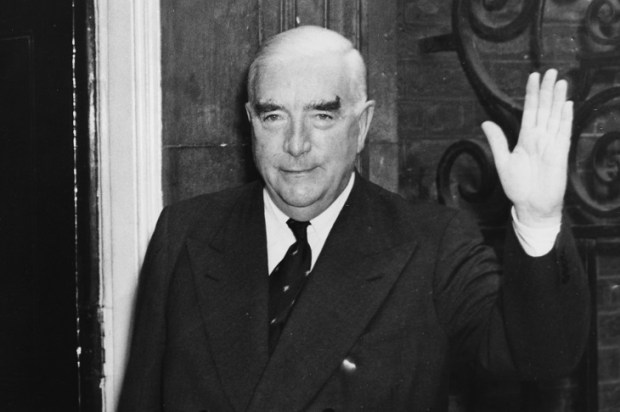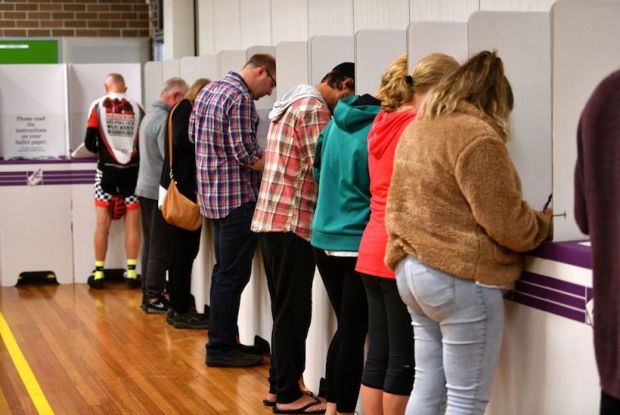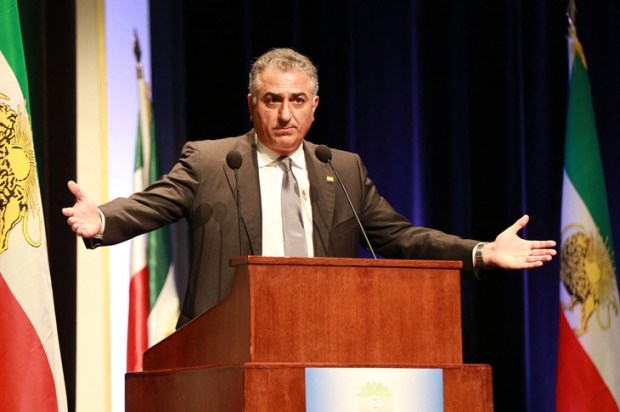Here is a simple truth: the Liberal Party in Victoria could not defeat the most corrupt, incompetent, and debt-ridden Labor government in our country’s history. Instead, it went backwards. It lost four seats to Dan Andrews. It was humiliated. Again.
The soul-searching is now underway. It is long overdue. But the two loudest voices to date in the post-defeat circumspection are both predictable and will not trouble Labor in the slightest.
One is the voice of officials and politicians who promise to listen more and consult more widely, while doing the same again next time.
The other is the ‘it’s time to stand for something’ brigade, who want to sharpen the differences with Labor and die on their feet, not on their knees.
If these are the only voices heard in the post-mortem, nothing will change in Victorian politics. Liberal Party members can pour themselves another glass of sherry, settle back in their favourite chair, and prepare for at least eight years in impotent opposition while Dan Andrews’ Woke revolution entrenches itself further in every public and corporate institution in the state.
Demographic factors in Victoria make this a certainty. The Millennials and their progressive agenda will dominate politics for the next decade and the one after that. This generation heavily backed Labor and its Green and Teal partners in this election, and found two additional progressive partners to boot – the Legalise Cannabis Party which won three seats in the Legislative Council (and almost defeated Pauline Hanson back in May for a Queensland Senate seat), and the Victorian Socialists who almost won a seat in the upper house and polled 1.4 per cent of lower house votes state-wide while focusing their efforts in blue-collar areas.
In metropolitan Melbourne, there is now a very uneven electoral equation. Labor and its four electoral partners (Greens, Teals, Legalise Cannabis, and Socialists) versus the Liberal Party with no electoral partners of substance beyond a rag-bag of fringe right-wing micro-parties. This, as the economists say, is not a level playing field.
Moreover, Labor’s economic strategy of steady subterranean expansion of the public sector and direct patronage of Woke private sector firms dovetails neatly with the demographics. A very large proportion of Millennial professionals are employed in the public sector or in outsourced agencies. In combination with Labor’s infrastructure Big Build, where most of the state’s construction and building contractors are directly fed from the public purse, Labor finds itself in a virtually impregnable economic and electoral position – almost all of its 53 per cent of the two-party vote are voters in the direct employ of the party and its patronage networks.
In this context, the Liberal Party officials who promise to ‘listen and consult more’ are wasting their time and everyone else’s.
But what of the ‘it’s time to stand for something’ brigade? What might they stand for?
How would a bold declaration that ‘climate change is a hoax’ play out? Or that ‘mandatory vaccination is dictatorship’? Or a promise of deep cuts in public sector employment? Let’s be frank: these positions would propel Labor’s 53 per cent in a sharp upwards trajectory. ‘Standing for something’ is useful only if you stand for the right things.
Does this mean that conservatism is electoral death? Absolutely not. Is it possible for a sensible conservative agenda to defeat woke leftism? Absolutely yes.
To think through what the shape of a sensible conservatism might look like, it is necessary for those on the centre-right to do some serious soul-searching. There are no quick solutions. Conservatism in Australia has been entangled with a range of assumptions and practices over the past century that have, in truth, often been tangential to the core of conservatism and sometimes directly contrary to it.
Unpacking these distinctions is necessary. Party officials and MPs won’t do this. They are driven by 24 hour news and organisational schedules that favour short-term fixes and discourage serious strategic thinking. But for people of conscientious conservative conviction, it is essential to unpack these distinctions in discerning a path forward.
Where did the Liberal Party of Menzies go astray in these past 78 years?
This is a critical question. The answer is not one thing, it is multi-faceted. Taken together, the following seven trends over the past 78 years have produced the Liberal Party’s current predicament:
1. It sided with Big Business and the Big End of Town instead of with market competition to break up cartels and favour small and family businesses.
2. It didn’t take enough interest in the well-being of workers and their families.
3. It overlooked the importance of civil society in creating sustainable, self-reliant families and communities, and became too comfortable with Big Government and Big Bureaucracy.
4. It swallowed the mantra of neo-liberalism that economics is the only thing that matters, and allowed the Left to take over the humanities and cultural institutions.
5. It aligned itself with career politicians and forgot that the core idea of democracy is citizen self-government.
6. It was too slow to embrace the multi-ethnicity, multi-faith character of our country.
7. It accepted high levels of government debt, transferred responsibility for debt repayment to the next generation, and abandoned the prudent conservative practice of living within our means.
If it is true that these seven factors have transformed the Liberal Party away from its roots, then it is clear that nothing short of root-and-branch culture change can set it right. Is that conceivable?
Those earnest party officials who promise to ‘listen and consult more’ are incapable of making even a scratch on the party’s culture. When you have grown up with a culture and adapted to it, you often can’t even see the culture you are part of. When you derive your livelihood from it, it is almost impossible to see it, let alone change it. Meanwhile, the ‘stand for something brigade’ is also missing the big picture – the party has morphed into an instrument of Big Business, Big Bureaucracy, and the Big End of Town. That is what it now stands for!
It’s clear that an electoral reconfiguration around a sensible conservatism is needed in Australia as well as Victoria – socially conservative but not aligned with Big Business and the Big End of Town, not captured by career politicians, and not driven by US-style culture wars.
On the week that followed the Victorian election, Premier Dan Andrews boasted that the policy that sealed majority government for him in Victoria was his promise to bring back the State Electricity Commission (SEC). The Kennett government abolished the SEC in the 1990s and privatised electricity generation and distribution – it was and remains a signature policy of contemporary liberalism. But it is loathed by working-class people because it produced higher electricity prices without the promised benefits of market competition.
Bringing back the SEC was a moment of political genius for Andrews. It kept blue-collar communities in the fold, and saw off credible Independent challengers in blue-collar electorates. And it killed the Liberal Party in the outer suburbs. Such is the disconnection with working-class communities, most Liberals responded to the SEC policy by mocking it as ‘old-fashioned’ and ‘socialist’. In fact, it delivered majority government to Labor, while the Liberals still don’t know what hit them.
The irony is that sensible conservatism is the natural political home of 80 per cent of Australians – a sensible conservatism that is not defined by ideological crusades like the privatisation of electricity, but the instincts of Australians for security and stability. It is ‘politics’ that has got in the way – notions of ‘left’ and ‘right’, and ‘culture wars’ have pushed many Millennials and other Australians to identify with the Left, but it is possible to imagine a sensible conservative consensus that brings them home.
The National Party, by the way, increased its representation in the Victorian Parliament while the Liberals lost seats. This trend can be expected to continue nationally. The National Party now needs a metropolitan conservative electoral partner to work with in forming governments – it no longer has one.
Vern Hughes is Director of Civil Society Australia and Convenor of The Conservative Party. www.conservativeparty.org.au
























